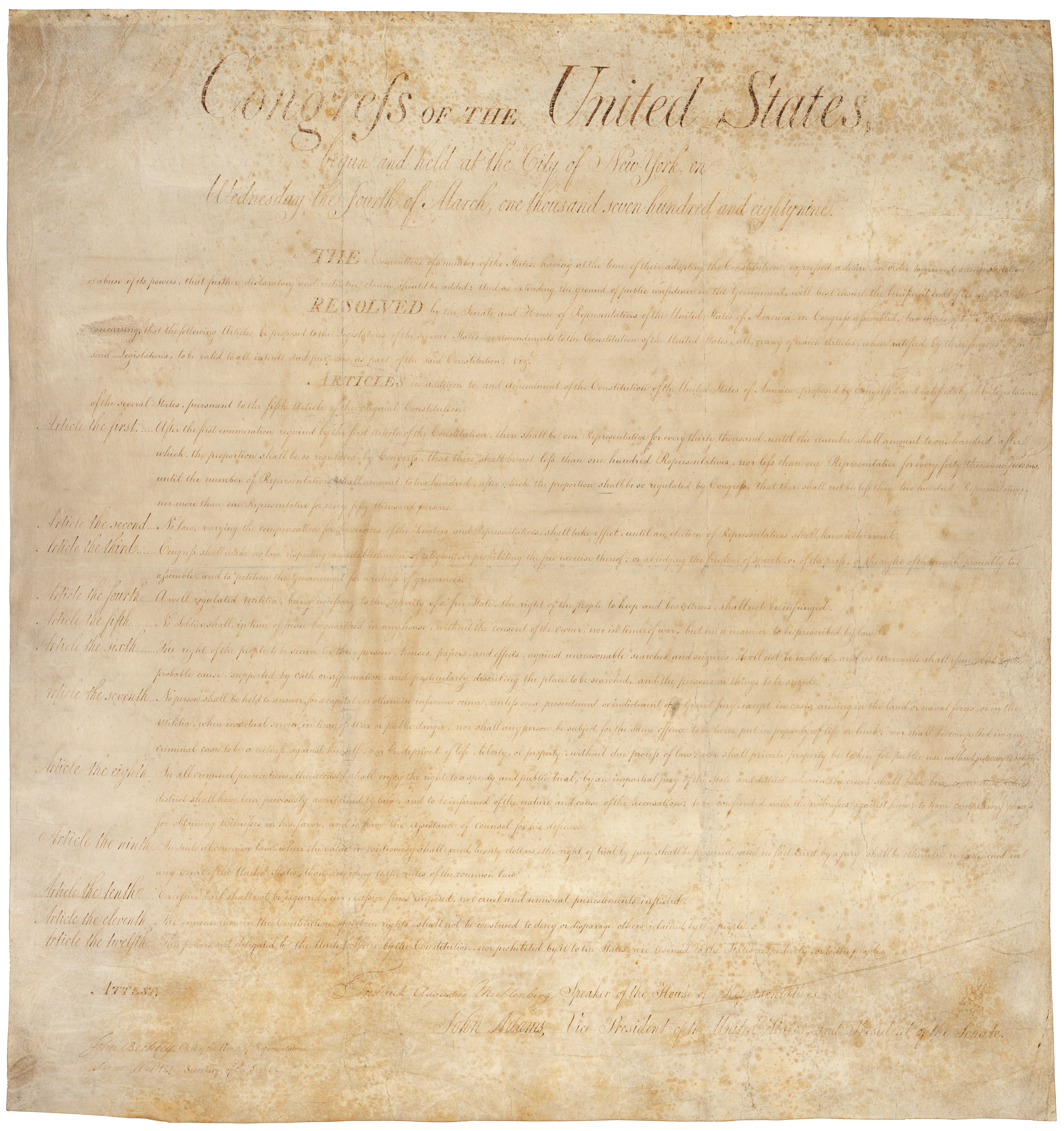|
Information Policy
Information policy is the set of all public laws, regulations and policies that encourage, discourage, or regulate the creation, use, storage, access, and communication and dissemination of information. It thus encompasses any other decision-making practice with society-wide constitutive efforts that involve the flow of information and how it is processed.Braman, S. (2011). Defining information policy. Journal of Information Policy 1-5. http://jip.vmhost.psu.edu/ojs/index.php/jip/article/view/19/14 . There are several fundamental issues that comprise information policy. Most prominent are public policy issues concerned with the use of information for democratization and commercialization of social life. These issues include, inter alia, digital environment, such as the digital divide, intellectual property, economic regulations, freedom of expression, confidentiality or privacy of information, information security, access management, and regulating how the dissemination of public i ... [...More Info...] [...Related Items...] OR: [Wikipedia] [Google] [Baidu] |
Information
Information is an abstract concept that refers to that which has the power to inform. At the most fundamental level information pertains to the interpretation of that which may be sensed. Any natural process that is not completely random, and any observable pattern in any medium can be said to convey some amount of information. Whereas digital signals and other data use discrete signs to convey information, other phenomena and artifacts such as analog signals, poems, pictures, music or other sounds, and currents convey information in a more continuous form. Information is not knowledge itself, but the meaning that may be derived from a representation through interpretation. Information is often processed iteratively: Data available at one step are processed into information to be interpreted and processed at the next step. For example, in written text each symbol or letter conveys information relevant to the word it is part of, each word conveys information rele ... [...More Info...] [...Related Items...] OR: [Wikipedia] [Google] [Baidu] |
ICANN
The Internet Corporation for Assigned Names and Numbers (ICANN ) is an American multistakeholder group and nonprofit organization responsible for coordinating the maintenance and procedures of several databases related to the namespaces and numerical spaces of the Internet, ensuring the network's stable and secure operation. ICANN performs the actual technical maintenance work of the Central Internet Address pools and DNS root zone registries pursuant to the Internet Assigned Numbers Authority (IANA) function contract. The contract regarding the IANA stewardship functions between ICANN and the National Telecommunications and Information Administration (NTIA) of the United States Department of Commerce ended on October 1, 2016, formally transitioning the functions to the global multistakeholder community. Much of its work has concerned the Internet's global Domain Name System (DNS), including policy development for internationalization of the DNS, introduction of new ge ... [...More Info...] [...Related Items...] OR: [Wikipedia] [Google] [Baidu] |
Public Policy
Public policy is an institutionalized proposal or a decided set of elements like laws, regulations, guidelines, and actions to solve or address relevant and real-world problems, guided by a conception and often implemented by programs. Public policy can be considered to be the sum of government direct and indirect activities and has been conceptualized in a variety of ways. They are created and/or enacted on behalf of the public typically by a government. Sometimes they are made by nonprofit organisations or are made in co-production with communities or citizens, which can include potential experts, scientists, engineers and stakeholders or scientific data, or sometimes use some of their results. They are typically made by policy-makers affiliated with (in democratic polities) currently elected politicians. Therefore, the "policy process is a complex political process in which there are many actors: elected politicians, political party leaders, pressure groups, civil servants ... [...More Info...] [...Related Items...] OR: [Wikipedia] [Google] [Baidu] |
Social Informatics
Social informatics is the study of information and communication tools in cultural or institutional contexts. Another definition is the interdisciplinary study of the design, uses and consequences of information technologies that takes into account their interaction with institutional and cultural contexts. A transdisciplinary field, social informatics is part of a larger body of socio-economic research that examines the ways in which the technological artifact and human social context mutually constitute the information and communications technology (ICT) ensemble.Sawyer, S. and Jarrahi, M.H. (2014) ''The Sociotechnical Perspective: Information Systems and Information Technology'', Volume 2 (Computing Handbook Set, Third Edition,) edited by Heikki Topi and Allen Tucker. Chapman and Hall/CRC. , http://sawyer.syr.edu/publications/2013/sociotechnical%20chapter.pdf Some proponents of social informatics use the relationship of a biological community to its environment as an analogy for ... [...More Info...] [...Related Items...] OR: [Wikipedia] [Google] [Baidu] |
Foreign Intelligence Surveillance Act
The Foreign Intelligence Surveillance Act of 1978 ("FISA" , ) is a United States federal law that establishes procedures for the physical and electronic surveillance and the collection of "foreign intelligence information" between "foreign powers" and "agents of foreign powers" suspected of espionage or terrorism.50 USC §1801(b) "'Agent of a foreign power' means— (1) any person other than a United States person, who— (A) acts in the United States as an officer or employee of a foreign power, or as a member of a foreign power as defined in subsection (a)(4), irrespective of whether the person is inside the United States; (B) acts for or on behalf of a foreign power which engages in clandestine intelligence activities in the United States contrary to the interests of the United States, when the circumstances indicate that such person may engage in such activities, or when such person knowingly aids or abets any person in the conduct of such activities or knowingly conspires ... [...More Info...] [...Related Items...] OR: [Wikipedia] [Google] [Baidu] |
Executive Order 12333
Executive Order 12333, signed on December 4, 1981 by U.S. President Ronald Reagan, was an Executive Order intended to extend powers and responsibilities of U.S. intelligence agencies and direct the leaders of U.S. federal agencies to co-operate fully with CIA requests for information.Ronald Reagan"Executive Order 12333—United States Intelligence Activities,"''US Federal Register,'' Dec. 4, 1981. This executive order was titled ''United States Intelligence Activities''. It was amended by Executive Order 13355: Strengthened Management of the Intelligence Community, on August 27, 2004. On July 30, 2008, President George W. Bush issued Executive Order 13470 amending Executive Order 12333 to strengthen the role of the Director of National Intelligence (DNI). Part 1 "Goals, Direction, Duties and Responsibilities with Respect to the National Intelligence Effort" lays out roles for various intelligence agencies, including the Departments of Defense, Energy, State, and Treasury ... [...More Info...] [...Related Items...] OR: [Wikipedia] [Google] [Baidu] |
Cyberspace
Cyberspace is a concept describing a widespread interconnected digital technology. "The expression dates back from the first decade of the diffusion of the internet. It refers to the online world as a world 'apart', as distinct from everyday reality. In cyberspace people can hide behind fake identities, as in the famous The New Yorker cartoon." (Delfanti, Arvidsson, 150) The term entered popular culture from science fiction and the arts but is now used by technology strategists, security professionals, government, military and industry leaders and entrepreneurs to describe the domain of the global technology environment, commonly defined as standing for the global network of interdependent information technology infrastructures, telecommunications networks and computer processing systems. Others consider cyberspace to be just a notional environment in which communication over computer networks occurs. The word became popular in the 1990s when the use of the Internet, networking, a ... [...More Info...] [...Related Items...] OR: [Wikipedia] [Google] [Baidu] |
Cyber Intelligence Sharing And Protection Act
The Cyber Intelligence Sharing and Protection Act (CISPA (112th Congress), (113th Congress), (114th Congress)) was a proposed law in the United States which would allow for the sharing of Internet traffic information between the U.S. government and technology and manufacturing companies. The stated aim of the bill is to help the U.S. government investigate cyber threats and ensure the security of networks against cyberattacks. The legislation was introduced on November 30, 2011, by Representative Michael Rogers ( R- MI) and 111 co-sponsors. It was passed in the House of Representatives on April 26, 2012, but was not passed by the U.S. Senate. President Barack Obama's advisers have argued that the bill lacks confidentiality and civil liberties safeguards, and the White House said he would veto it. In February 2013, the House reintroduced the bill and it passed in the United States House of Representatives on April 18, 2013, but stalled and was not voted upon by the Senate. ... [...More Info...] [...Related Items...] OR: [Wikipedia] [Google] [Baidu] |
Web 2
Web 2.0 (also known as participative (or participatory) web and social web) refers to websites that emphasize user-generated content, ease of use, participatory culture and interoperability (i.e., compatibility with other products, systems, and devices) for end users. The term was coined by Darcy DiNucci in 1999 and later popularized by Tim O'Reilly and Dale Dougherty at the first Web 2.0 Conference in 2004. Although the term mimics the numbering of software versions, it does not denote a formal change in the nature of the World Wide Web, but merely describes a general change that occurred during this period as interactive websites proliferated and came to overshadow the older, more static websites of the original Web. A Web 2.0 website allows users to interact and collaborate with each other through social media dialogue as creators of user-generated content in a virtual community. This contrasts the first generation of Web 1.0-era websites where people were limited to vie ... [...More Info...] [...Related Items...] OR: [Wikipedia] [Google] [Baidu] |
PEST Analysis
In business analysis, PEST analysis ("political, economic, socio-cultural and technological") describes a framework of macro-environmental factors used in the environmental scanning component of strategic management. It is part of an external environment analysis when conducting a strategic analysis or doing market research, and gives an overview of the different macro-environmental factors to be taken into consideration. It is a strategic tool for understanding market growth or decline, business position, potential and direction for operations. PEST analysis was developed in 1967 by Aguilar as an environmental scanning framework. Aguilar argued that firms must scan the economic, technical, political and social categories (ETPS) that may affect strategy, defining environmental scanning as follows, “scanning for information about events and relationships in a company’s outside environment, the knowledge of which would assist top management in its task of charting the company’ ... [...More Info...] [...Related Items...] OR: [Wikipedia] [Google] [Baidu] |
Fourth Amendment To The United States Constitution
The Fourth Amendment (Amendment IV) to the United States Constitution is part of the Bill of Rights. It prohibits unreasonable searches and seizures. In addition, it sets requirements for issuing warrants: warrants must be issued by a judge or magistrate, justified by probable cause, supported by oath or affirmation, and must particularly describe the place to be searched and the persons or things to be seized. Fourth Amendment case law deals with three main issues: what government activities are "searches" and "seizures," what constitutes probable cause to conduct searches and seizures, and how to address violations of Fourth Amendment rights. Early court decisions limited the amendment's scope to physical intrusion of property or persons, but with ''Katz v. United States'' (1967), the Supreme Court held that its protections extend to intrusions on the privacy of individuals as well as to physical locations. A warrant is needed for most search and seizure activities, but the ... [...More Info...] [...Related Items...] OR: [Wikipedia] [Google] [Baidu] |
Domain Name System
The Domain Name System (DNS) is a hierarchical and distributed naming system for computers, services, and other resources in the Internet or other Internet Protocol (IP) networks. It associates various information with domain names assigned to each of the associated entities. Most prominently, it translates readily memorized domain names to the numerical IP addresses needed for locating and identifying computer services and devices with the underlying network protocols. The Domain Name System has been an essential component of the functionality of the Internet since 1985. The Domain Name System delegates the responsibility of assigning domain names and mapping those names to Internet resources by designating authoritative name servers for each domain. Network administrators may delegate authority over sub-domains of their allocated name space to other name servers. This mechanism provides distributed and fault tolerance, fault-tolerant service and was designed to avoid a single ... [...More Info...] [...Related Items...] OR: [Wikipedia] [Google] [Baidu] |



